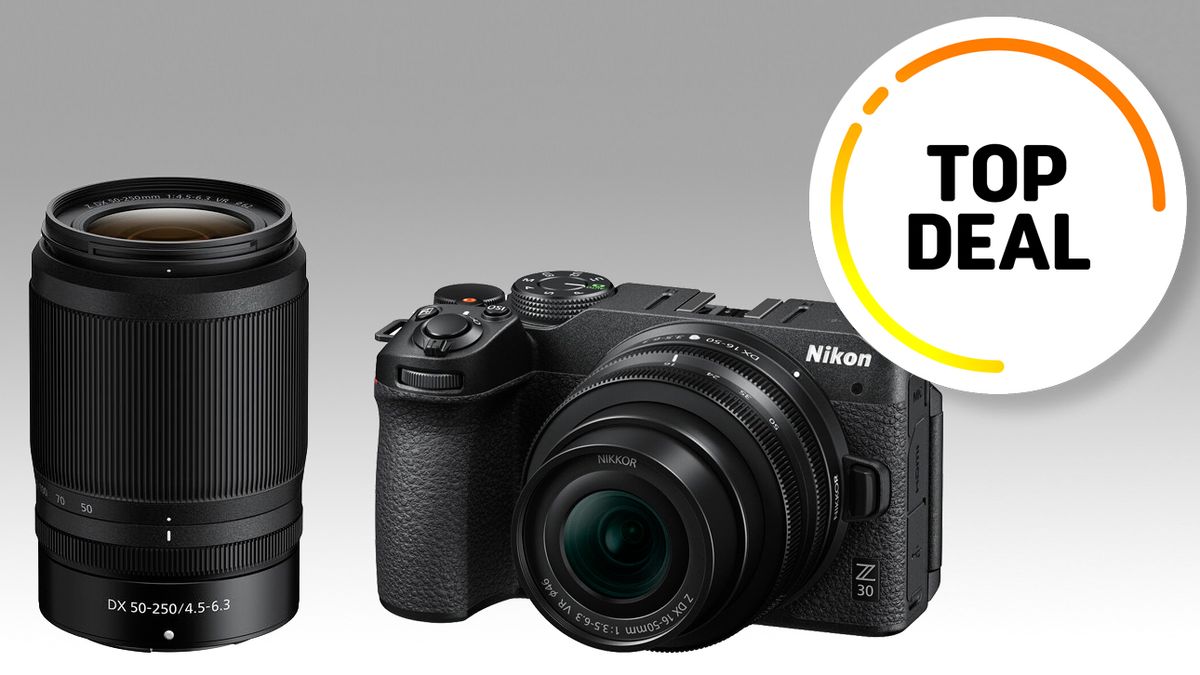Christmas camera shopping hack: Buy a twin lens kit and bag a …

A lot of the best Black Friday camera deals[1] have now been and gone - but there are still lots of great offers around at the moment[2], so you can still grab a bargain. Saving money on a product is great, of course. However, if you're investing in a camera for the first time, there is a better approach to trying to find a camera deal and then trying to find a lens deal to match it - and the answer is to buy a twin-lens kit.
If you're unfamiliar with the term, this means a bundle that includes a camera (usually with an APS-C sensor) and two "kit lenses".
These are general-purpose optics that cover one of two focal ranges: standard and telephoto.
Usually a camera comes bundled with just one of these kit options (typically the standard as that's the most widely used). Looking for a twin kit lens option offers great value, but more than that it means that you won't need to buy another lens unless you really, really want to - after all, you have an enormous 18-250mm range, covering pretty much all the photography bases!
The best twin lens kit camera deals
Kit lens limitations
So what's the catch? Well, historically, kit lenses weren't great quality - they were made to create budget-friendly kits with entry-level cameras, so performance came second to price.
These days, however, kit lenses are by no means bad lenses!
They often boast great optical performance, and they are super compact and lightweight, making them the perfect companion to a starter or intermediate camera system.
Still, in order to maintain that size, weight, affordability and quality, the tradeoff is speed. Kit lenses are not very "fast", which means the aperture usually only opens up to f/3.5 or f/4.5. In simple terms, this means that they don't blur the backgrounds as much as faster lenses (with apertures like f/2.8 or f/1.8), and you need to shoot with a slower shutter speed in order to work in low light conditions.
There are ways around both points.
You can, for example, increase the amount of blur by increasing the distance between your subject and the background. And to compensate for the slower aperture (without raising your ISO, which degrades image quality), many kit lenses offer image stabilization (IS) that counteracts the effect of camera shake while shooting at slower speeds.
Many people who buy these kinds of cameras don't actually end up buying more lenses. However, there are some things that kit lenses simply can't do.
Macro photography is one of them, so to shoot super close-ups, you'll need to invest in a macro lens[3].
If you want to shoot at extreme distances, a super telephoto lens[4] will be necessary.
To cover fast action, like sports or birds, you'll need a fast aperture, which means a dedicated lens for sports[5] or lens for birds[6].
And for portraiture with the most buttery-smooth backgrounds, you'll have to look at a portrait lens[7].
References
- ^ Black Friday camera deals (www.digitalcameraworld.com)
- ^ moment (www.digitalcameraworld.com)
- ^ macro lens (www.digitalcameraworld.com)
- ^ super telephoto lens (www.digitalcameraworld.com)
- ^ lens for sports (www.digitalcameraworld.com)
- ^ lens for birds (www.digitalcameraworld.com)
- ^ portrait lens (www.digitalcameraworld.com)